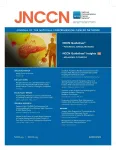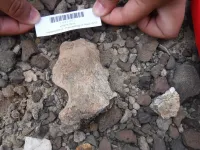New assay detects marker of metastatic cancers, infection, trauma and neurological disease
Adapting existing techniques, researchers developed an accurate, sensitive blood test
2021-04-13
(Press-News.org) Scientists at the Walter Reed Army Institute for Research demonstrated the potential of a novel blood test for cathepsin B, a well-studied protein important to brain development and function, as an indicator for a range of disease states.
Cathepsin B plays an important role in the body, regulating the metabolism, immune responses, degradation of improperly produced proteins and other functions. Under certain conditions, such as metastatic cancers, infections, trauma and neurological disease, cathepsin B production is upregulated. Recent research published by WRAIR researchers highlighted the potential of cathepsin B as an indicator, or biomarker, of the severity of traumatic brain injury.
In this study, published in ACS Omega, researchers demonstrated an ultrasensitive assay to measure cathepsin B in blood. While high levels of cathepsin B are readily detectable in aspirates, biopsies and cerebrospinal fluid, a blood test is particularly desirable due to its ease of use with little risk to the patient.
"Although cathepsin can be abundant in some tissues, accurate measurement in blood has been a challenge, especially if changes are expected to be small or sample is limited," said Dr. Bharani Thangavelu, lead author on the paper and researcher at WRAIR's Brain Trauma Neuroprotection Branch. "Our strategy uses an ultrasensitive technique to improve cathepsin B detection from small volumes of blood with little to no noise or impact from interfering substances."
Biomarkers are a source of great interest to researchers due to their potential to dramatically improve both the diagnosis and categorization of disease. Furthermore, they have the potential to validate treatment strategies by indicating whether drugs have reached their proposed targets and achieved therapeutic benefits.
Researchers plan to continue developing and testing the assay, ultimately aiming to develop it into a small, portable diagnostic tool.
"Biomarker tests that accurately reflect the extent and severity of injury can dramatically improve the standard of care, minimizing the need for resource-intensive diagnostics," said Dr. Angela M. Boutté, author and section chief of molecular biology and proteomics within BTN. "This would allow for early, accurate detection as well as monitoring of injury or disease. This aspect is particularly important for assessment of TBI on the battlefield to help guide medical decisions."
INFORMATION:
This research was supported by the Combat Casualty Care Research Programs.
About the Walter Reed Army Institute of Research
Headquartered in Silver Spring, Maryland, the Walter Reed Army Institute of Research is the oldest and most mission-diverse biomedical research laboratory in the Department of Defense. WRAIR provides unique research capabilities and innovative solutions to a range of force health and readiness challenges currently facing U.S. Service Members, along with threats anticipated during future operations. With research units in the state of Washington, Africa, Asia and the Caucasus region, WRAIR houses three centers, the Center for Infectious Disease Research, the Center for Military Psychiatry and Neuroscience and the Center for Enabling Capabilities. For more information, visit https://www.wrair.army.mil.
Its Brain Trauma Neuroprotection Branch develops ground-breaking preventive, diagnostic and therapeutic solutions to mitigate the effects of TBI at the point of injury to reduce morbidity and mortality.
ELSE PRESS RELEASES FROM THIS DATE:
2021-04-13
It cannot be denied that, over the past few decades, the miniaturization of electronic devices has taken huge strides. Today, after pocket-size smartphones that could put old desktop computers to shame and a plethora of options for wireless connectivity, there is a particular type of device whose development has been steadily advancing: wearable biosensors. These tiny devices are generally meant to be worn directly on the skin in order to measure specific biosignals and, by sending measurements wirelessly to smartphones or computers, keep track of the user's health.
Although materials scientists have developed many types ...
2021-04-13
Researchers from North Carolina State University have found a way to fine-tune the molecular assembly line that creates antibiotics via engineered biosynthesis. The work could allow scientists to improve existing antibiotics as well as design new drug candidates quickly and efficiently.
Bacteria - such as E. coli - harness biosynthesis to create molecules that are difficult to make artificially.
"We already use bacteria to make a number of drugs for us," says Edward Kalkreuter, former graduate student at NC State and lead author of a paper describing the ...
2021-04-13
University of Maryland School of Medicine (UMSOM) researchers have shown that psilocybin--the active chemical in "magic mushrooms"-- still works its antidepressant-like actions, at least in mice, even when the psychedelic experience is blocked. The new findings suggest that psychedelic drugs work in multiple ways in the brain and it may be possible to deliver the fast-acting antidepressant therapeutic benefit without requiring daylong guided therapy sessions. A version of the drug without, or with less of, the psychedelic effects could loosen restrictions on who could receive the therapy, and lower costs, making the benefits of psilocybin more available to more people in need.
In all clinical ...
2021-04-13
The "three-body problem," the term coined for predicting the motion of three gravitating bodies in space, is essential for understanding a variety of astrophysical processes as well as a large class of mechanical problems, and has occupied some of the world's best physicists, astronomers and mathematicians for over three centuries. Their attempts have led to the discovery of several important fields of science; yet its solution remained a mystery.
At the end of the 17th century, Sir Isaac Newton succeeded in explaining the motion of the planets around the sun through ...
2021-04-13
PLYMOUTH MEETING, PA [April 13, 2021] -- The April 2021 issue of JNCCN--Journal of the National Comprehensive Cancer Network publishes new research from Memorial Sloan Kettering Cancer Center (MSK) and Gustave Roussy Institute, which suggests that baseline brain imaging should be considered in most patients with metastatic kidney cancer. The researchers studied 1,689 patients with metastatic renal cell carcinoma (mRCC) who had been considered for clinical trial participation at either of the two institutions between 2001 and 2019 and had undergone brain imaging in this context, without clinical suspicion for brain involvement. The researchers discovered 4% had asymptomatic brain metastases in this setting. This group was found to have a low median 1-year ...
2021-04-13
ITHACA, N.Y. - We've all seen them: political ads on television that promise doom gloom if Candidate X is elected, and how all your problems will be solved if you choose Candidate Y. And Candidate Y, of course, approves this message.
Beyond attempting to move a large swath of the population to vote one way or another, the seemingly constant bombardment of negativity in the name of our democratic process is anxiety-inducing, researchers have found.
"Many of my friends and family members wind up quite stressed out, for lack of a better word, during each election season," said Jeff Niederdeppe, professor in the Department of Communication in the College of ...
2021-04-13
With 'Eyecam' they now present the prototype of a webcam that not only looks like a human eye, but imitates its movements realistically. "The goal of our project is not to develop a 'better' design for cameras, but to spark a discussion. We want to draw attention to the fact that we are surrounded by sensing devices every day. That raises the question of how that affects us," says Marc Teyssier. In 2020, the French scientist completed his doctorate on the topic of anthropomorphic design in Paris. Now he is a postdoctoral researcher in the Human-Computer Interaction Lab at Saarland University in Germany.
The research team at Saarland Informatics Campus has developed ...
2021-04-13
Human non-alcoholic fatty liver disease (NAFLD) is a little-understood condition that significantly increases the risk of inflammation, fibrosis and liver cancer and ultimately requires liver transplant.
"NAFLD has been difficult to study mainly because we had no good animal model," said corresponding author Dr. Karl-Dimiter Bissig, who was at Baylor during the development of this project and is now at Duke University.
The disease has both genetic and nutritional components, which have been hard to understand in human studies, and murine models ...
2021-04-13
A new study verifies the age and origin of one of the oldest specimens of Homo erectus--a very successful early human who roamed the world for nearly 2 million years. In doing so, the researchers also found two new specimens at the site--likely the earliest pieces of the Homo erectus skeleton yet discovered. Details are published today in the journal Nature Communications.
"Homo erectus is the first hominin that we know about that has a body plan more like our own and seemed to be on its way to being more human-like," said Ashley Hammond, an assistant curator in the American Museum of Natural History's Division of Anthropology and the lead author of the new study. "It had longer lower limbs than upper limbs, a torso ...
2021-04-13
ITHACA, N.Y. - The muon is a tiny particle, but it has the giant potential to upend our understanding of the subatomic world and reveal an undiscovered type of fundamental physics.
That possibility is looking more and more likely, according to the initial results of an international collaboration - hosted by the U.S. Department of Energy's Fermi National Accelerator Laboratory - that involved key contributions by a Cornell team led by Lawrence Gibbons, professor of physics in the College of Arts and Sciences.
The collaboration, which brought together 200 scientists from 35 institutions in seven countries, set out to confirm the findings of a 1998 experiment that startled physicists by indicating that muons' magnetic ...
LAST 30 PRESS RELEASES:
[Press-News.org] New assay detects marker of metastatic cancers, infection, trauma and neurological disease
Adapting existing techniques, researchers developed an accurate, sensitive blood test


